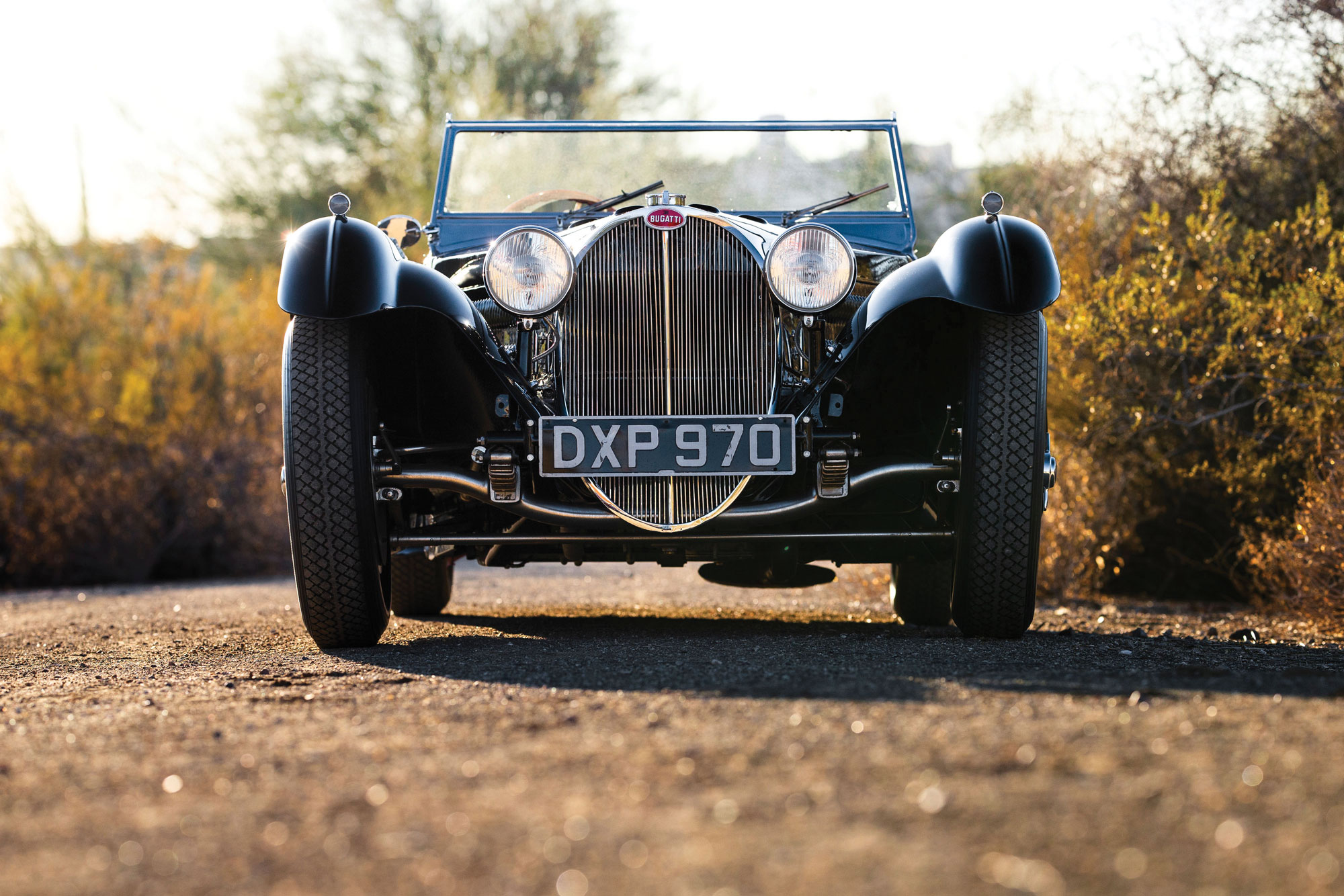
We were recently witness to an amazing confluence of events, where two Corsica-bodied Bugatti Type 57S cars were auctioned within a month of each other. That both of these cars should come up for auction — and sell — is a strange twist of fate indeed.
The first example offered was chassis 57512, at the RM Sotheby’s Arizona sale held January 22. It sold for $4,735,000, including buyer’s premium. Bonhams then auctioned chassis 57503 at its “Legends of the Road” sale in London on February 19. It bested its sibling, earning $5,678,843.
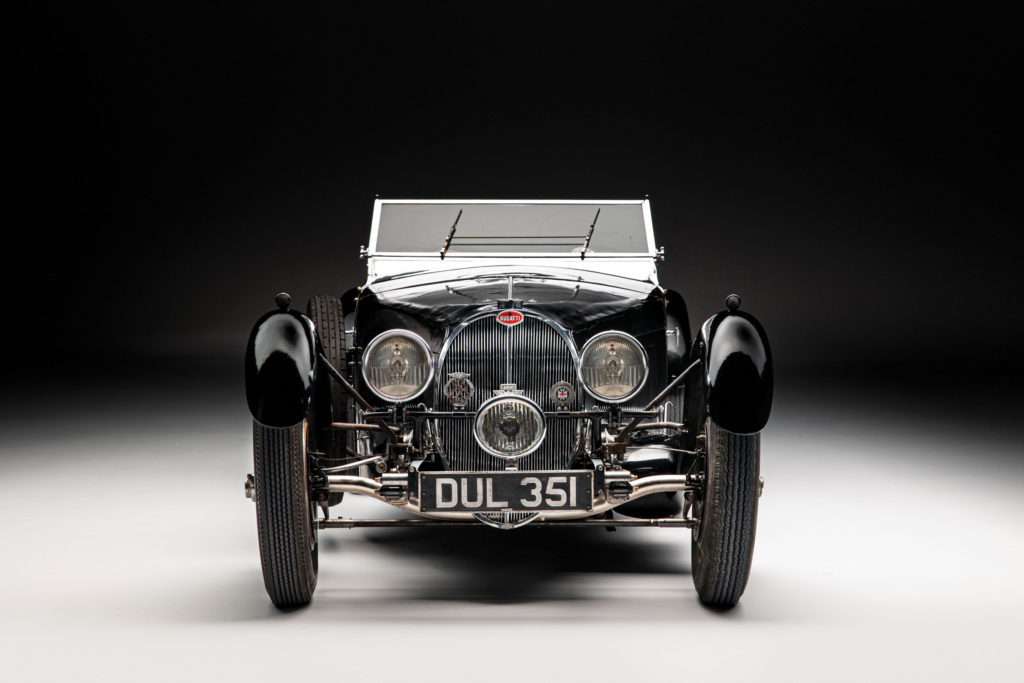
Two of two
Not including the factory race cars, only 42 Type 57S chassis were produced between 1936 and 1938. Of these, 22 were bodied by the factory. The rest were sold as rolling chassis for other coachbuilders, selected at the bequest of the client.
The U.K. was a strong market for Bugatti, and the British agent took a total of 15 T57S models, of which 10 were rolling chassis. Eight were sent to Corsica, a coachbuilder at Cricklewood in north London. Our two cars were the only ones bodied as 4-seat tourers, a curious choice for a short chassis.
Compared to the factory-bodied cars, these “tourers” were different in style and unmistakably British. If it wasn’t for the radiator grille, you would never guess that they are Bugattis. To put it bluntly, they were not sexy, certainly not when compared to the Atlantic and Atalante.
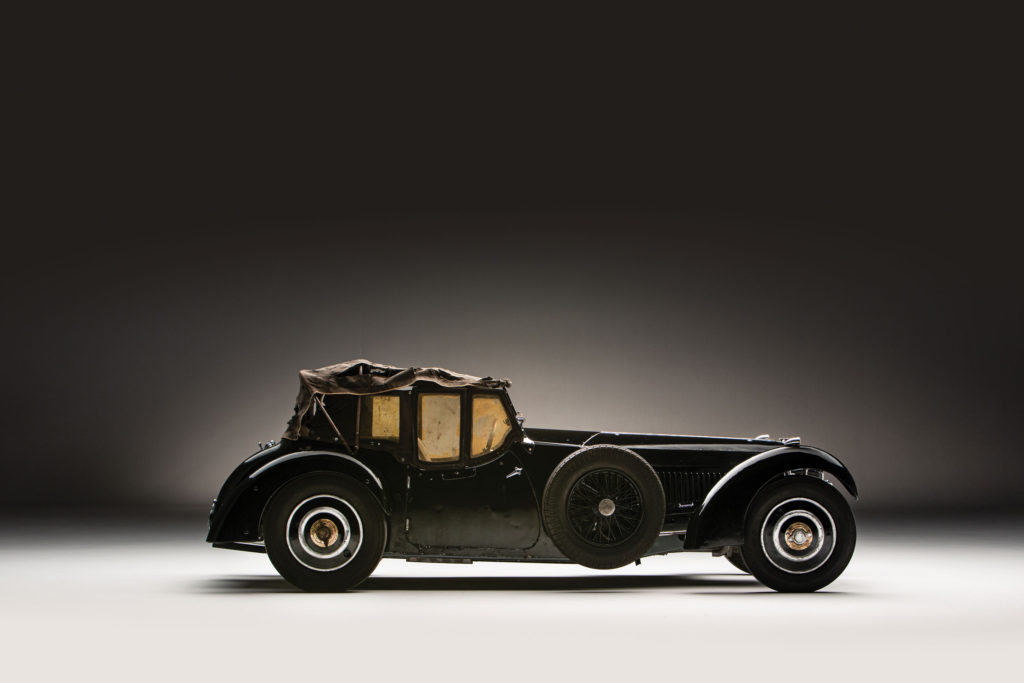
Who’s Who of drivers
The T57S was Bugatti’s most prestigious and sporting road car by a long margin. It used the twin-overhead-cam, 3.3-liter straight 8, proven in the company’s mainstay T57, but with a radically different chassis. It was shorter, lower, lighter and not comparable to the standard T57. A dry sump allowed the engine to sit lower in the chassis. Combined with the unique V-shaped radiator surround, the car was instantly recognizable and far racier in appearance than the standard T57.
It was heavily influenced by the factory race cars and aimed at a select clientele of well-heeled gentlemen drivers. The list of first and subsequent owners of these cars reads like a Who’s Who. In the 1950s and 1960s, when “ordinary” Bugattis were being scrapped — or swapped for the proverbial fridge — the S never lost its desirability, with cars changing hands for more than they cost when new.
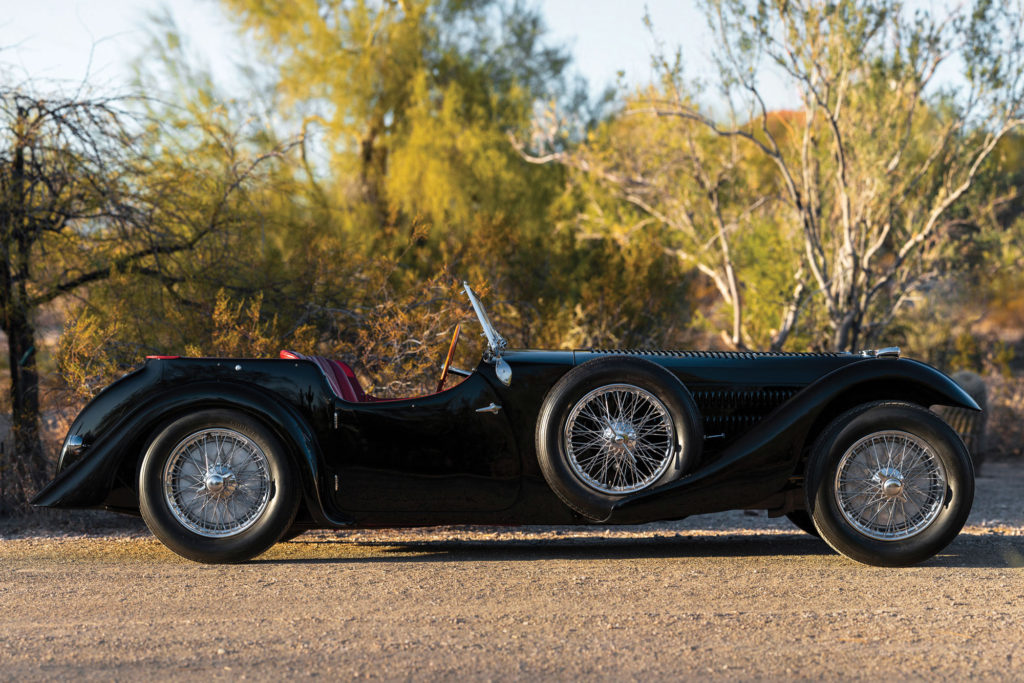
A convoluted history
As one would expect, the RM Sotheby’s car was supplied new to an English customer. Like many Bugattis in the ’50s, it was exported to America. At some point the car had been upgraded with a supercharger. This Bugatti was acquired in 1950 by a Walter Stocklin, who apparently raced it in original configuration at events on the East Coast.
In 1955, the story gets messy. Stocklin had the original body replaced with coachwork resembling a grand-prix race car. Five years later, it was acquired by a well-known collector, Judge John North, along with the original Corsica body. North sold the body, which then changed hands a number of times, before reverting back to North. The judge then put the Corsica body onto a modified standard T57 chassis and completed the car with spare parts before selling it to Count Hubertus von Donhoff in Germany. In 1998, North again re-acquired the car, and reunited the original body with its chassis and running gear. The judge was obviously a “collector-dealer,” as he then sold the car to General Lyon, who then sold it to the Blackhawk Collection, which then proceeded with a restoration.
At some point in this checkered history, the firewall and dashboard were replaced with new items, as was the hood (to non-original specification) and the front wings were either modified or replaced. The soft-top frame was missing, and no effort was made to replace this during the restoration. It is likely that many ancillaries are not original to the car. No photos of any of the transformation or restoration stages were available.
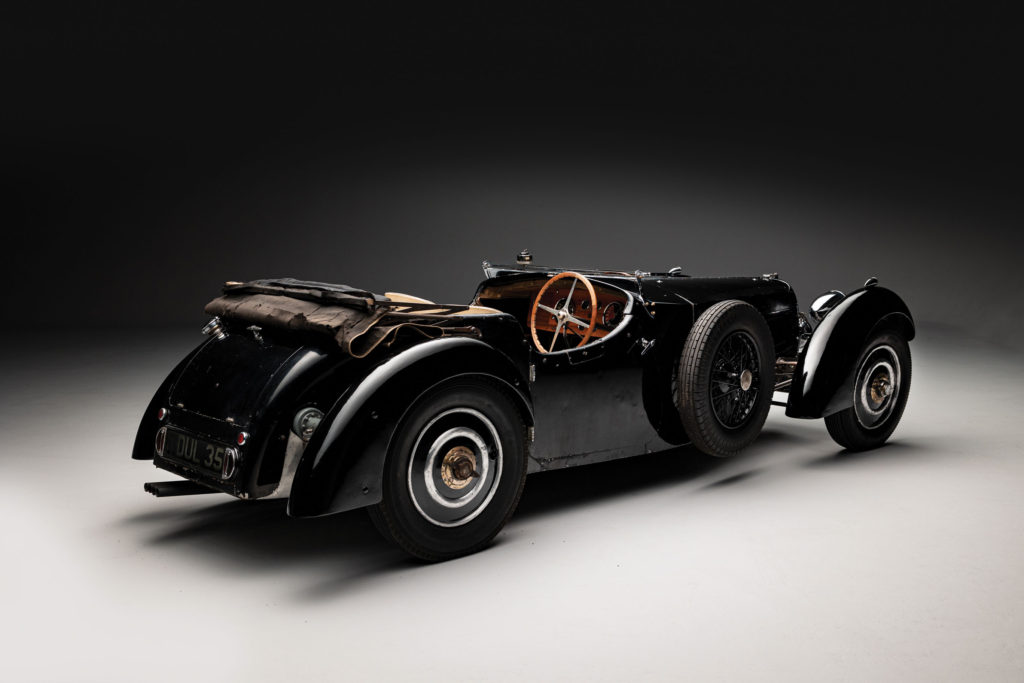
A five-decade dream
The Bonhams car’s last owner retained the car for 50 years and meticulously documented it, starting before the purchase. The history file is astounding and complemented by noted Bugatti historians prior to the sale. The first owner, a shipping magnate, laid it up for the duration of the war, then sold it to Rodney Clarke, a motor trader, who had an accident with the car. Although the body survived unscathed, the chassis was damaged, as were the engine mounts and gearbox casing. Clarke stripped the car down for repairs but sold it to a new owner before reassembly.
The car was rebuilt using the gearbox and rear axle from another T57S. The chassis and engine numbers were restamped in a different fashion in order to claim that the car was new, thus benefiting from recently introduced lower yearly tax rates. There is, however, no doubt concerning the originality of the chassis, engine and bodywork.
In 1969 the car was purchased by the last owner, a gifted engineer named Bill Turnbull. He used it during the summer of ’69 and then embarked on a painstaking restoration. Turnbull modified some components during his restoration but was meticulous in preserving the originality of the body and interior, even the original soft top. Although bodied by Corsica, it differs slightly from the RM Sotheby’s car, noticeably in the wings. The effect is sportier, but arguably less elegant.
At this point, the chassis rails were discovered to be of a thinner grade than a normal T57S. Holes drilled in the metal for lightening and later filled in were also found. The chassis thus proved to be identical to the only surviving factory streamline race car. The conclusion was drawn that the chassis rails had been recycled from one of the factory streamliners to build a road car.
Sadly, Turnbull passed away in 2019, his five-decade dream of driving the car back to France unfulfilled. Although complete, the Bonhams car will need the help of a specialized workshop to bring it back to life.
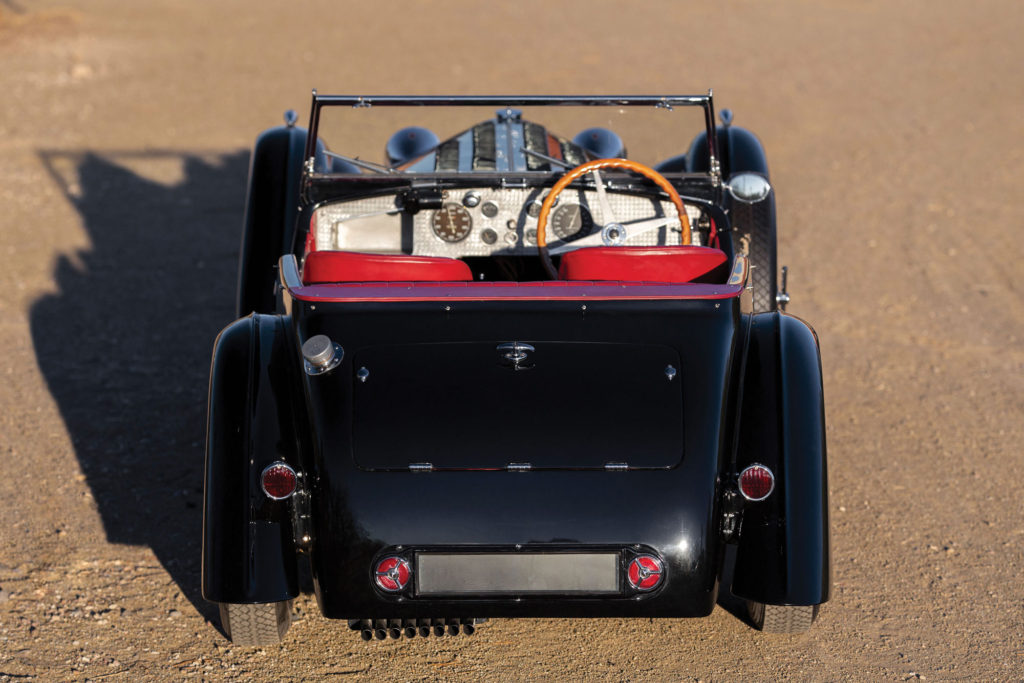
Still a Type 57S
In terms of desirability, both subject cars come fairly low on the list of T57S Bugattis. Many of these cars had simply gorgeous bodies and are among the most desirable cars ever made. Last summer, Gooding & Company achieved over $10 million for a factory-bodied Atalante coupe. But with their staid coachwork, this pair was never going to be anywhere close to that number.
Any potential buyers would have weighed up the pros and cons of the two cars. Both have a somewhat complicated past, and each one still needs a fair amount of money thrown at it. The slight differences in body style should not have made any meaningful difference in values, nor would the addition of a supercharger to the RM Sotheby’s car.
The car from Bonhams has the tantalizing prospect of being laid down on the chassis of an original factory race car. Yet conversely, if it had a normal chassis, it may have suffered less damage in the accident, and subsequently retained more (or all) of its original components. The car from RM Sotheby’s had a patchy history concerning its body and was also missing some original components.
When all was said and done, the Bonhams car came out on top by nearly $1 million, selling to a prominent English collector, while the RM Sotheby’s car stayed in the U.S. The prices achieved reflect the huge desirability of a Bugatti Type 57S, despite cloudy histories and not particularly pretty coachwork. Both cars sold a little on the high side of market value, proving that true thoroughbreds never go out of fashion. ♦